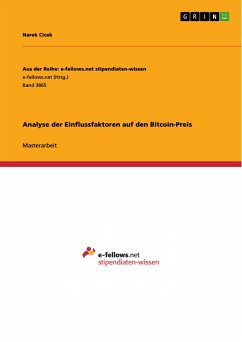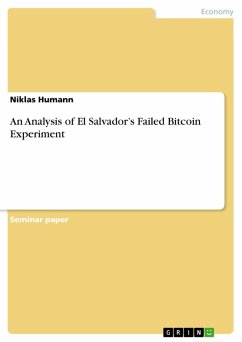Academic Paper from the year 2018 in the subject Economics - Monetary theory and policy, grade: 9/10, International School of Management, Campus Munich, course: Financial Geography, language: English, abstract: This work is about bitcoin and illegal trading as well as fluctuations and the causal effect of it. The recent emergence of new technologies in the financial sector and virtual communities lead to new types of transactions and started questioning the relevance of financial centers around the world. The main reason for the emergence of virtual currencies (cryptocurrencies) is not necessary incapability or shortcomings of traditional currencies, but rather the development of the internet and its networks. Unfortunately, cryptocurrencies raise more controversies on questions such as legal framework, financial risks or effect on the economy - this is a challenge for the financial sector and the existence of financial centers. In the beginning, it is necessary to define Virtual Currencies. This type of currency can be defined as International Monetary Fund (IMF) in a research "Monetary and Capital Markets, Legal, and Strategy and Policy Review Departments" describes digital representations of value, issued by private developers and denominated in their own unit of account. This definition clarifies the usage of virtual currencies as it has the functionality to be transacted electronically, stored, accessed if two parties of a transaction confirm an exchange. Virtual currencies emerged because of the creation of a blockchain or so-called distributed ledger system. This system is exceptional because of decentralization principles. The most important detail in a system is the unique ledger of transactions. Bitcoin technology allows to have a consensus between members of a network and decentralize transactions within a network.
Dieser Download kann aus rechtlichen Gründen nur mit Rechnungsadresse in A, B, BG, CY, CZ, D, DK, EW, E, FIN, F, GR, HR, H, IRL, I, LT, L, LR, M, NL, PL, P, R, S, SLO, SK ausgeliefert werden.









